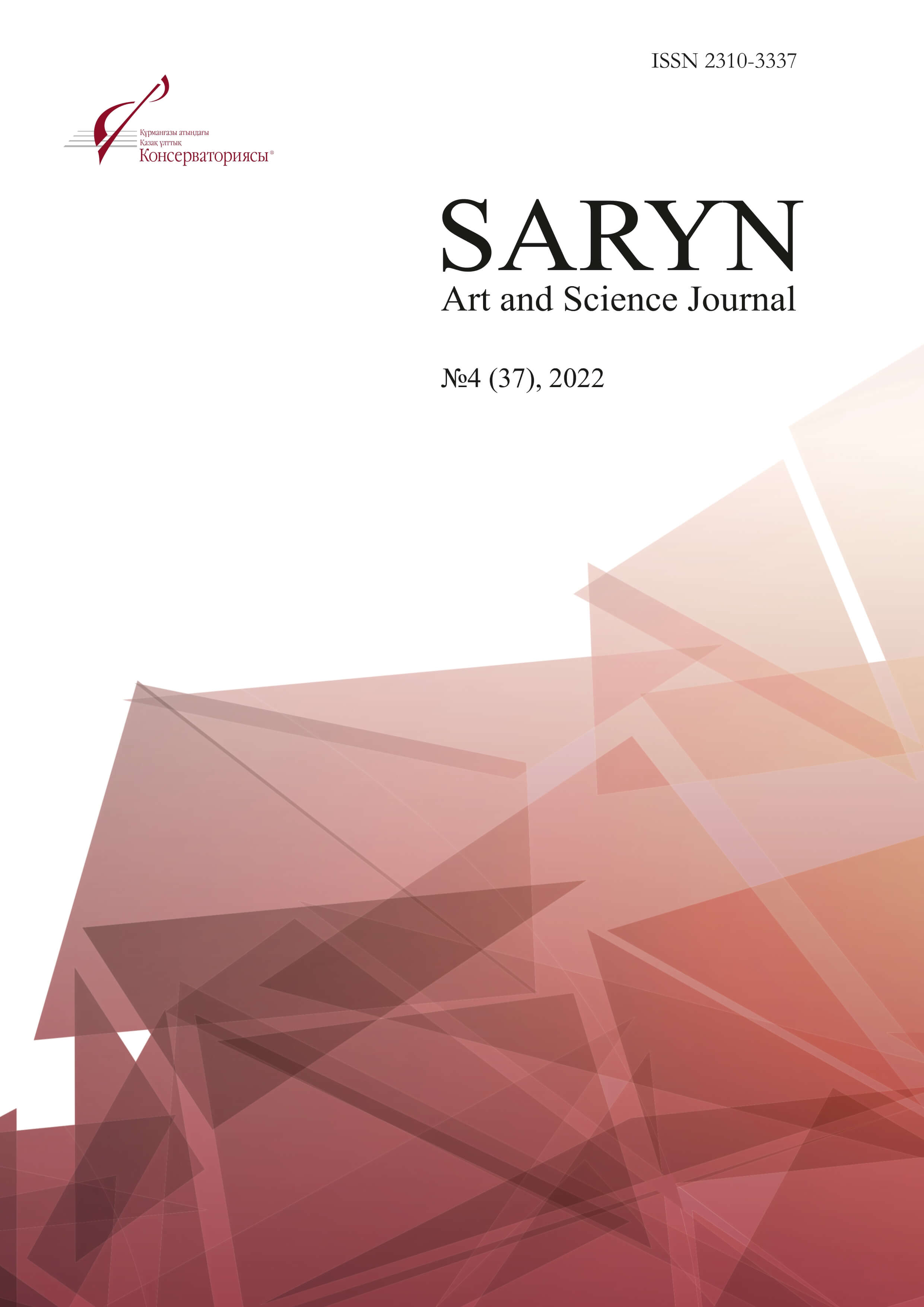Article information
Article publication date
2023-12-13
Article Page
11-20
Chapter
Arts & Humanities
License
Abstract
This article focuses on the modern Japanese compositional school of the mid-twentieth and early twenty-first centuries, which has taken one of the leading places in the global music community. The article is focused on a complete and deep understanding of the environment and historical cultural realities in which composers of this generation were formed, representing two types of "traditionalist" composers - Dan Ikuma, Hasakawa Fumio, Akira Ifukube and Nobuo Terahara, and "Westerners" - Toru Takemitsu, Makoto Moroi, Akira Yuyama, Yuji Takahashi and Rio Noda, who studied in France, Germany, the USA and Russia, which determined the originality of development of academic music in Japan. On the one hand, it was important for the authors to consider the leading tendencies of contemporary professional Japanese music against the background of one of the fundamental problems of musical art, namely the interaction of national and cultural traditions, in particular European – Erik Satie Satie, Olivier Messiaen, Karlheinz Stockhausen, Iannis Xenakis, Krzysztof Penderecki, and American – Edgard Varese, John Cage, Aaron Copeland. On the other hand, to show the complex, multi-stage, but promising path that required from composers, both "avant-garde" and "traditionalists", to change their positions, to come to a unified decision that would allow them to start building a new musical history.
Keywords
Japanese composer school
Japanese composers
Dan Ikuma
Hasakawa Fumio
Akira Ifukube
Nobuo Terahara
Toru Takemitsu
Makoto Moroi
Akira Yuyama
Yuji Takahashi
Rio Noda
References
Dubrovskaâ M. Formirovanie âponskoj kompozitorskoj školy i tvorčeskaâ deâtel’nost’ Âmady Kosaku // Avtoreferat dis. dokt. isk. – Novosibirsk, 2005 – 60 p.
Akopân L. O. Pamâti Toru Takèmicu // L. O. Akopân // Muz. akad. 1997 – №3, pp. 221-223.
Nest’ev Nest’ev I. V. Tokio // Sovetskaâ muzyka. – 1974. – № 10, pp. 123-130.
Alpatova A. Aziatskij muzykal’nyj avangard: obrazy arhaiki v tvorčestve H. Masedy i T. Takèmicu // Muzykal’naâ akademiâ. 2010. № 2, pp. 154-158.
100 let so dnâ roždeniâ Džona Kejdža URL: http://www.lokatme.ru/mag/experience/experience- interview/178805-john-cage-100year [Data poslednego obraŝeniâ 6. 02.2023].
Kompozitor, dirižër, tvorec: interv’û s Hisaisi Dzë. https://konnichiwa.ru/4017/ [Data poslednego obraŝeniâ: 06.02.2023].
Grigorenko E. Džon Kejdž. Tvorčestvo. Ki1v.: «Muzična Ukraina», 2012. – 226 p.
Snežkova E. A. Tvorčestvo Takèmicu Toru v kontekste nacional’noj muzykal’noj kul’t8ury Âponii: na primere instrumental’nyh sočinenij. Avtoreferat na soiskanie učenoj stepeni kandidata iskusstvovedeniâ – Novosibirsk, 2007. – 30 p.
Ksenakis Ânis. Muzyka, sočinâemaâ s pomoŝ’û komp’ûtera // 100 kompozitorov HH veka (perevod s nemeckogo E. Rozovskoj). – Čelâbinsk, Izdatel’stvo «Ural LTD»,1999. p. 83.
Abdinurov A. Kšištof Mejer «Novoj muzykal’noj gazete» // Novaâ muzykal’naâ gazeta, 2000, № 9- 11. p.17.
Lihačev D.S. Razvitie russkoj literatury H-XVII vekov. – M., 1973. p. 21.
Gè Mèn. K voprosu o razvitii saksofonnogo iskusstva v Kitae v HH – načale HHI veka / Gè Mèn // Iskusstvo i kul’tura. – № 3(15). – 2014. – pp. 48-54.



